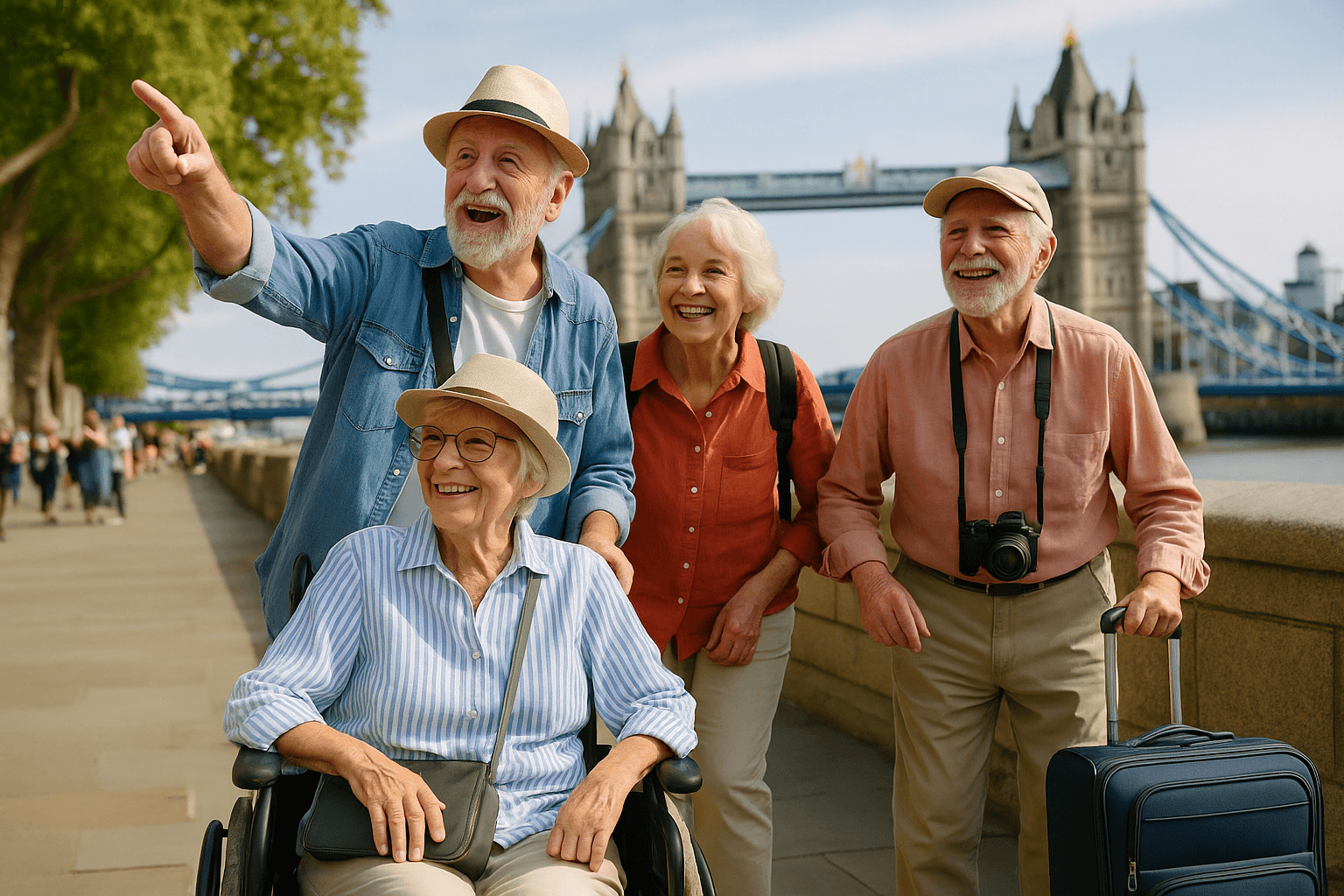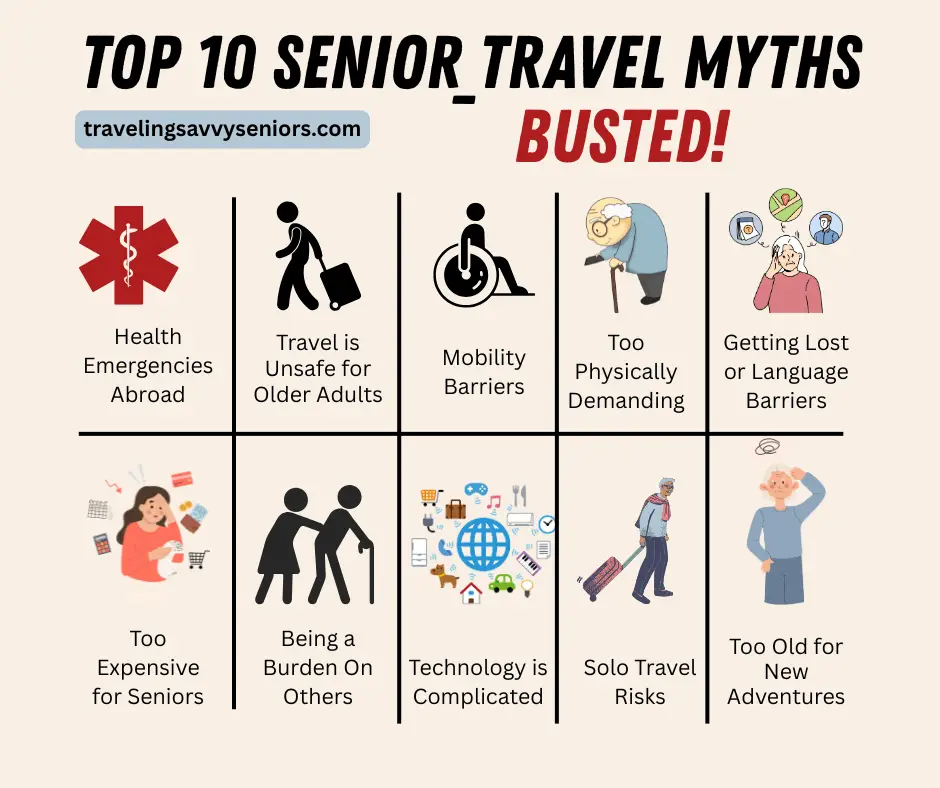Vietnam is a country that offers a perfect blend of history, culture, natural beauty, and modern city life.
From the ancient charm of Hanoi to the stunning beaches of Da Nang, the lantern-lit streets of Hoi An, and the bustling energy of Ho Chi Minh City, all cities in Vietnam to visit tell a different story.
For seniors who prefer comfortable and hassle-free travel, we’ve included information on senior-friendly attractions, best times to visit, and easy ways to explore each city. Whether you love history, food, nature, or simply soaking in a new culture at a comfortable pace, Vietnam offers something for every type of traveler.
Quick Table of Best Cities in Vietnam to Visit
This table provides a quick overview of the best cities in Vietnam, their highlights, and the best time to visit these regions in Vietnam, including for seniors, to visit for mild weather and comfortable travel.
| City | Best For | Best Time to Visit |
|---|---|---|
| Hanoi | Culture & History | October–April |
| Ha Long Bay | Scenic Cruises | October–April |
| Hoi An | Ancient Town & Shopping | February–April |
| Hue | Imperial History | February–April |
| Da Nang | Beaches & Adventure | March–August |
| Ho Chi Minh City | Modern City Life | December–April |
| Mekong Delta | Floating Markets | December–April |
1. Hanoi – The Cultural and Historical Capital of Vietnam
Hanoi, the capital of Vietnam, is a city that blends ancient traditions with modern energy. Located in the northern region, it serves as the cultural and historical heart of the country. Walking through Hanoi feels like stepping into a living museum, where French colonial buildings, Buddhist pagodas, and lively markets exist alongside modern skyscrapers and trendy cafés.
Hanoi’s Old Quarter is walkable, but for those who prefer a more relaxed experience, there are guided rickshaw rides (cyclos) and electric car tours, which provide a comfortable way to explore without extensive walking.
Why Visit Hanoi?
Hanoi is one of Vietnam’s most visited cities for good reason. It offers historical landmarks, cultural experiences, and some of the best food in Southeast Asia.
- The Old Quarter – A maze of 36 ancient streets, each historically dedicated to a specific trade. Here, you’ll find hidden alleyways, bustling street markets, and colonial shop houses.
- Hoan Kiem Lake & Ngoc Son Temple – One of Hanoi’s most iconic landmarks, this serene lake is a popular spot for locals and tourists alike. The red wooden bridge leading to Ngoc Son Temple makes for an excellent photo opportunity.
- Ho Chi Minh Mausoleum – A must-visit for history lovers, where you can see the preserved body of Vietnam’s revolutionary leader, Ho Chi Minh.
- Temple of Literature – Dating back to 1070, this beautifully preserved Confucian temple and former university is one of Hanoi’s most peaceful attractions.
- Vietnam Museum of Ethnology – A fascinating museum showcasing Vietnam’s 54 ethnic groups, complete with traditional stilt houses and cultural exhibits.
Best Time to Visit Hanoi
Hanoi experiences four distinct seasons, but the best time to visit is between October and April.
- October–April – The weather is cool and dry, making it perfect for sightseeing and outdoor activities.
- December–January – Hanoi can be chilly (as low as 10°C or 50°F), so bring warm clothes. This period is also popular for Tet (Vietnamese New Year) celebrations.
- May–September – Hanoi is hot, humid, and rainy, but this is when the countryside is at its greenest, making it a good time for nature lovers.
2. Ha Long Bay – Vietnam’s Most Breathtaking Natural Wonder
Ha Long Bay is one of Vietnam’s most famous and scenic destinations, known for its towering limestone islands, emerald waters, and mysterious caves. Recognized as a UNESCO World Heritage Site, this breathtaking bay is often the highlight of any trip to northern Vietnam.
Ha Long Bay is a dream destination for senior travelers who enjoy scenic beauty without strenuous activities. The best way to explore is by cruise, which allows seniors to enjoy the landscapes comfortably.
A cruise through Ha Long Bay feels like floating through a dreamlike landscape, with nearly 2,000 limestone karsts rising dramatically from the water. Whether you prefer a luxury overnight cruise or a day trip from Hanoi, Ha Long Bay offers a mix of relaxation, adventure, and natural beauty.
Why Visit Ha Long Bay?
- Sung Sot Cave – One of the largest and most impressive caves in Ha Long Bay, featuring massive chambers filled with stalactites and stalagmites.
- Ti Top Island – Famous for its panoramic viewpoint, where a short but steep hike rewards you with unparalleled views of the bay.
- Kayaking Through Lagoons – Exploring the bay’s hidden caves and lagoons by kayak allows for a closer look at its natural beauty.
- Floating Villages – Visit traditional floating fishing villages, where locals have lived on the water for generations. Learn about their unique way of life and even try fresh seafood caught that day.
Best Time to Visit Ha Long Bay
- October–April – The skies are clearer, and the sea is calmer, making it the best time for boat trips.
- June–August – The summer months bring warmer weather, but also higher chances of rain and typhoons, which can occasionally disrupt cruises.
3. Hoi An – Vietnam’s Most Picturesque Ancient Town
Hoi An is one of the most beautiful towns in Vietnam, known for its lantern-lit streets, well-preserved architecture, and peaceful riverside setting. A UNESCO World Heritage Site, this charming town transports visitors back in time with its Japanese bridges, Chinese temples, and French colonial buildings.
Walking through Hoi An feels like stepping into a postcard, with colorful lanterns swaying above narrow streets, small boats floating down the Thu Bon River, and tailor shops crafting custom clothing for visitors. Whether you’re looking for history, culture, shopping, or relaxation, Hoi An has something for everyone.
Why Visit Hoi An?
Hoi An’s timeless beauty and relaxed atmosphere make it one of the most visited cities in Vietnam. Here’s what makes it special:
- Ancient Town – A pedestrian-friendly zone filled with historic houses, temples, and charming cafés. Must-visit sites include the Japanese Covered Bridge, Fujian Assembly Hall, and Old Merchant Houses.
- Hoi An Lantern Festival – Held every full moon, this event transforms the town into a glowing wonderland of floating lanterns on the river.
- Tailor Shops – Hoi An is known as Vietnam’s tailoring capital. You can get custom-made suits, dresses, and shoes within 24 hours.
- Local Markets & Food Scene – Try Cao Lau (Hoi An’s signature noodle dish), Banh Mi Phuong (famous Vietnamese sandwiches), and fresh seafood from the river.
- Beaches & Countryside – Just a short bike ride from the town, An Bang Beach and the coconut palm forests of Cam Thanh Village offer great escapes into nature.
Hoi An is a relaxed and walkable city, although during the busy season, the crowded streets can be a bit challenging for those with mobility issues but, can be perfect for senior travelers as well as those looking for culture, history, and shopping. Its lantern-lit streets and gentle riverside setting make it a peaceful escape.
Best Time to Visit Hoi An
The best time to visit Hoi An is between February and April, when the weather is warm but not too humid.
- February–April: Ideal temperatures, dry weather, and fewer crowds.
- May–August: Hot and humid, but great for beach lovers.
- October–November: Heavy rains can lead to flooding in the Ancient Town, so it’s best to avoid this period.
4. Hue – Vietnam’s Imperial Capital and Cultural Gem
Hue, the former imperial capital of Vietnam, is one of the country’s most historically significant cities. Located in central Vietnam, it was home to the Nguyen Dynasty, which ruled from 1802 to 1945. The city is famous for its imperial palaces, royal tombs, ancient pagodas, and rich cultural heritage.
Hue is perfect for seniors interested in history. Many of its attractions offer guided tours with minimal walking, and the city has a calm, easygoing pace.
Nestled along the Perfume River, Hue offers a glimpse into Vietnam’s royal past, with its well-preserved monuments and temples. Unlike the bustling streets of Hanoi or Ho Chi Minh City, Hue has a calm and traditional atmosphere, making it a great destination for history lovers and those looking for a more relaxed experience.
Why Visit Hue?
Hue is a treasure trove of history, with many well-preserved sites showcasing the grandeur of Vietnam’s last imperial dynasty.
- The Imperial City (Hue Citadel) – This massive complex was once the seat of the Nguyen emperors. Within its fortified walls, you’ll find palaces, temples, gardens, and ceremonial halls.
- Thien Mu Pagoda – Overlooking the Perfume River, this seven-story pagoda is one of Vietnam’s most beautiful and historic Buddhist sites.
- The Royal Tombs – Scattered along the Perfume River, these ornate tombs of the Nguyen emperors showcase intricate architecture and peaceful landscapes. The most famous ones include the Tomb of Tu Duc, Tomb of Minh Mang, and Tomb of Khai Dinh.
- Dong Ba Market – The largest market in Hue, offering local handicrafts, fresh produce, and traditional dishes.
- Perfume River Boat Cruise – A boat ride along the river offers a scenic and relaxing way to explore Hue’s historical landmarks.
Hue’s Unique Cuisine
Hue’s cuisine is distinct from other parts of Vietnam, known for its bold flavors, artistic presentation, and influence from royal cooking traditions. Some must-try dishes include:
- Bun Bo Hue – A spicy beef noodle soup with lemongrass, chili, and shrimp paste.
- Banh Beo – Steamed rice cakes topped with shrimp, crispy pork skin, and dipping sauce.
- Nem Lui – Grilled lemongrass skewers served with fresh herbs and rice paper.
- Com Hen – A dish made from rice, baby clams, peanuts, and crispy pork rinds.
Best Time to Visit Hue
Hue experiences a tropical monsoon climate, with two main seasons.
- February–April: The best time to visit, with cool and dry weather.
- May–August: Hot and humid, but still good for sightseeing.
- October–November: The rainiest months, sometimes causing floods.
5. Da Nang – Vietnam’s Coastal Paradise with Modern Charm
Da Nang is Vietnam’s most dynamic coastal city, offering stunning beaches, breathtaking mountain views, and a growing modern skyline. Known as the gateway to Central Vietnam, Da Nang is the perfect blend of relaxation, adventure, and cultural attractions.
Unlike the historical depth of Hue or the ancient charm of Hoi An, Da Nang is fast-growing, lively, and full of energy. It’s home to some of Vietnam’s best beaches, thrilling adventure spots, and famous landmarks like the Golden Bridge and Marble Mountains.
Why Visit Da Nang?
Da Nang is a great destination for all types of travelers, whether you’re looking for adventure, relaxation, or a mix of both.
- My Khe Beach & Non Nuoc Beach – Famous for soft white sand, clear water, and excellent water sports. Perfect for swimming, sunbathing, and surfing.
- Ba Na Hills & Golden Bridge – One of Vietnam’s most iconic attractions, featuring the famous Golden Bridge held by giant stone hands, an amusement park, and a scenic cable car ride.
- Marble Mountains – A cluster of five limestone mountains, each representing a natural element. Explore caves, pagodas, and viewpoints with breathtaking scenery.
- Dragon Bridge – A massive bridge shaped like a dragon that breathes fire and water every weekend night.
- Son Tra Peninsula – Home to the Linh Ung Pagoda and the tallest Lady Buddha statue in Vietnam.
Best Time to Visit Da Nang
- March–August: The best time for beach lovers, with warm and dry weather.
- September–November: Fewer crowds, but there may be occasional rain.
- December–February: Cooler temperatures, but still enjoyable.
6. Ho Chi Minh City – The Bustling Economic Hub of Vietnam
Formerly known as Saigon, Ho Chi Minh City is Vietnam’s largest and most modern metropolis. This energetic city is a blend of French colonial history, modern skyscrapers, bustling markets, and a legendary food scene.
While Hanoi represents the traditional heart of Vietnam, Ho Chi Minh City is its modern and fast-paced soul. It’s the economic powerhouse of the country, filled with business districts, rooftop bars, and world-class restaurants.
Why Visit Ho Chi Minh City?
Ho Chi Minh City offers a mix of history, culture, and excitement.
- Notre-Dame Cathedral & Central Post Office – Stunning French colonial architecture, built in the 19th century.
- War Remnants Museum – A powerful museum showcasing Vietnam’s war history.
- Ben Thanh Market – A lively market offering street food, souvenirs, and handicrafts.
- Cu Chi Tunnels – An underground tunnel network used during the Vietnam War. Visitors can crawl through sections of the tunnels for an immersive experience.
- Bui Vien Street – The city’s backpacker district, known for its nightlife, bars, and entertainment.
Best Time to Visit Ho Chi Minh City
- December–April: The best months, with cooler temperatures and low humidity.
- May–November: Hot and humid, with occasional rain showers.
7. Mekong Delta – Vietnam’s Lush and Tranquil Waterways
The Mekong Delta is one of Vietnam’s most unique and fascinating regions, offering a glimpse into the country’s rural life. Located in southern Vietnam, this vast network of rivers, swamps, and islands is home to floating markets, traditional villages, and endless rice fields.
Life in the Mekong Delta revolves around the water. Locals travel by boat, grow tropical fruits in riverside orchards, and fish for their daily meals. A visit here is a peaceful contrast to Vietnam’s bustling cities, making it perfect for travelers looking for an authentic, slow-paced experience.
Why Visit the Mekong Delta?
The Mekong Delta offers a different side of Vietnam—one where nature, tradition, and daily life intertwine on the water.
- Cai Rang Floating Market – The largest floating market in Vietnam, where boats serve as mobile shops selling fruits, vegetables, coffee, and even hot noodle soups.
- Ben Tre Coconut Forests – Known as the “Land of Coconuts”, this area features peaceful canals lined with lush green palm trees. Visitors can ride a traditional sampan boat through the narrow waterways.
- Tra Su Cajuput Forest – A stunning bird sanctuary with flooded forests, best explored by boat.
- Vinh Trang Pagoda – One of the largest Buddhist temples in the Mekong Delta, featuring a massive reclining Buddha statue.
- Local Villages & Homestays – Experience traditional village life, learn about rice paper making, coconut candy production, and fish farming.
A guided boat tour is the best way to explore the region, allowing you to navigate through the maze of rivers and experience daily life on the water.
Best Time to Visit the Mekong Delta
- December–April: The dry season, with pleasant temperatures and clear skies.
- May–November: Rainy season, but also the best time for fresh fruit harvests. Flooding can occur in some areas, but it enhances the beauty of the landscape.
Final Thoughts: Which City Should You Visit in Vietnam?
Vietnam is an excellent destination for all travelers, including seniors, offering a mix of culture, history, natural beauty, and relaxation. The best cities for seniors are those with accessible tours, mild weather, and easy transportation options.
- For history and culture: Hanoi, Hue
- For natural beauty: Ha Long Bay, Mekong Delta
- For beaches and relaxation: Da Nang, Hoi An
- For modern city life and nightlife: Ho Chi Minh City
No matter which cities you choose, Vietnam promises an unforgettable journey. Whether you’re exploring the ancient streets of Hoi An, cruising through Ha Long Bay, or experiencing the floating markets of the Mekong Delta, each destination offers a new adventure, a new flavor, and a new story to tell.
Vietnam is waiting. Are you ready to explore?





